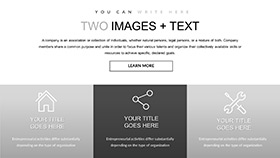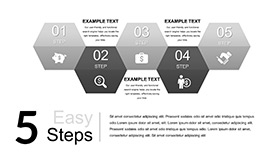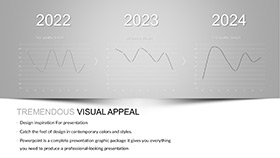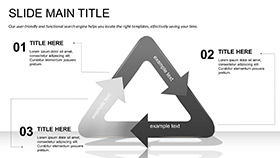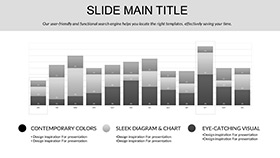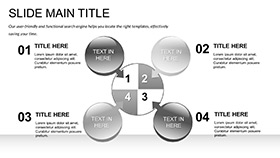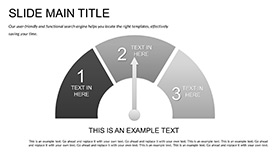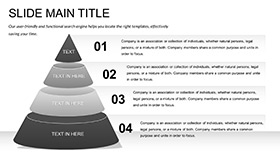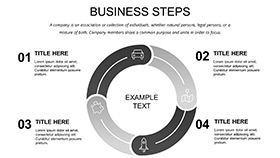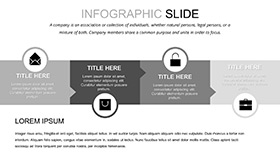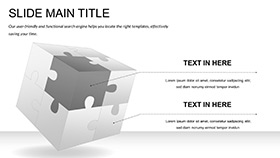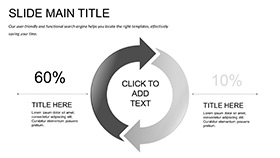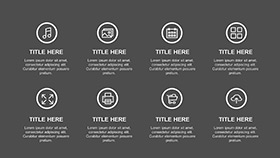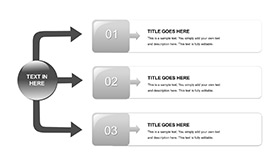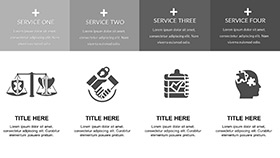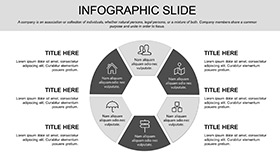From the swirl of a flask to the intricacy of genetic sequences, chemistry and bioengineering demand presentations that distill complexity into revelation. Enter the Knowledge of Chemistry and Bioengineering Keynote Template, a 59-slide powerhouse with 28 diagrams precision-built for these domains. Seven color schemes evoke lab fluorescents or natural gradients, while three masters and backgrounds provide the canvas for your hypotheses. Keynote-native, it's for those moments when words alone can't capture the elegance of a peptide fold or enzyme kinetics.
Aimed at researchers, educators, and biotech trailblazers, this template reframes dry data as dynamic journeys. Think of a cycle diagram looping metabolic pathways, editable to spotlight bottlenecks in glycolysis - your conference crowd leans in, connections firing. It's more than slides; it's a scaffold for ideas that resonate, bridging textbook theory to cutting-edge applications.
Essential Features for Scientific Depth
The template's strength lies in its diagram ecosystem, where each of the 28 serves a narrative purpose. From equilibrium balances to phylogenetic trees, elements layer intuitively, with connectors that snap to grids for unerring alignment.
- Chart and Graph Suite: Line plots for titration curves, area charts for biomass growth - all with error bars that toggle on demand.
- Scheme Variety: Seven options, spanning stark monochromes for print to spectral arrays for digital displays.
- Structural Foundations: Three masters for hierarchical content, backgrounds textured like agarose gels or crystal facets.
Tweaking is effortless: highlight a residue in a protein structure slide, change its hue to flag mutations, and watch legends update. This fidelity to form empowers you to iterate without interruption.
Deep Dive into Bioengineering Diagrams
The "Gene Editing Cascade" slide chains CRISPR steps, with modular blocks for guide RNA and Cas9 - drag to reorder for variant workflows. Nearby, a bubble chart sizes enzymes by activity, bubbles bursting in animation to simulate degradation. For chemistry purists, the orbital hybridization diagram rotates lobes, clarifying sp3 from sp2 in organic talks.
These tools adapt to contexts, such as a grad student's defense: embed sequence alignments in a heatmap, colors grading from conserved to variable, turning genomes into glanceable gold.
Targeted Applications for Conferences and Classrooms
An academic at a bioengineering summit might deploy a Sankey for energy transfers in biofuels, flows thickening to emphasize efficiencies - peers nod, collaborations spark. In the classroom, a lecturer animates reaction coordinates, barriers lowering to show catalysts at work, demystifying thermodynamics for undergrads.
Pharma pros find value in dose-response curves, sliders adjusting IC50 values live, making toxicity profiles interactive and memorable.
Streamlined Creation Process
- Foundation Lay: Import the template, select a master tuned for lecture flow or poster symmetry.
- Content Layering: Paste spectral data into an XY scatter, Keynote smoothing trends with regression lines.
- Dynamic Enhancements: Sequence fades for stoichiometry balances, revealing ratios progressively.
- Output Optimization: Bounce to MOV for recordings or static PNGs for manuscripts.
Versus ad-hoc builds, this accelerates from draft to dazzle, freeing mental bandwidth for the science itself.
Why Choose This for Your Expertise
Built for Keynote 2016+, it honors Apple's ecosystem with fluid gestures on iPad for fieldwork edits. Icons draw from PDB motifs, lending authenticity that impresses reviewers. Modular by design, export subsets for grants or weave into larger decks.
Experience the fusion of form and function - secure your copy of the Chemistry & Bioengineering Keynote Template and catalyze conversations.
Frequently Asked Questions
How do the diagrams support bioinformatics visuals?
With tree and network slides, nodes connect via editable paths, ideal for phylogenies or signaling webs.
Customization for academic branding?
Effortless - swap schemes to university palettes, fonts to serif for formal papers.
Animation best practices for reaction slides?
Layer builds to mimic kinetics, delaying products until reactants align, enhancing temporal understanding.
Integration with lab software exports?
Yes, import SVGs from ChemDraw or graphs from Origin, retaining layers for further tweaks.
Suitability for undergrad teaching?
Perfectly - simple overrides let students focus on concepts, not curves.









